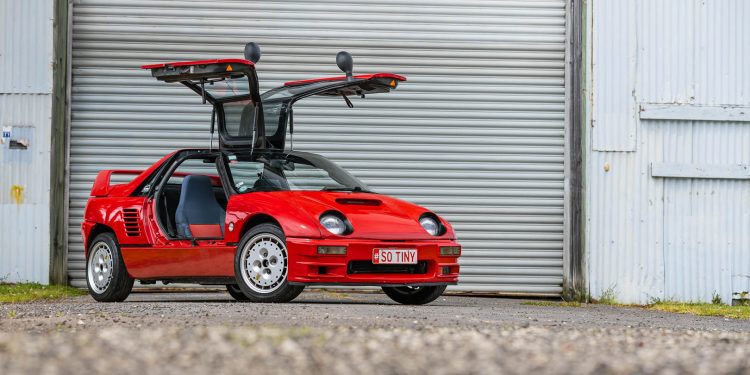1993 Mazda Autozam AZ-1 Mazdaspeed
Words: Kyle Cassidy | Photos: Isaac Western
A tiny mid-engined kei car wouldn’t be our first choice for a commuter but that doesn’t stop the owner of this Autozam AZ-1 using it on the daily. We try it on for size.
In the mid-1980s, Japan was enjoying a booming economy. Confidence was high with growth being driven by strong domestic demand.
This home-grown consumption spurred the local car makers into action and it seemed nothing was too outrageous.
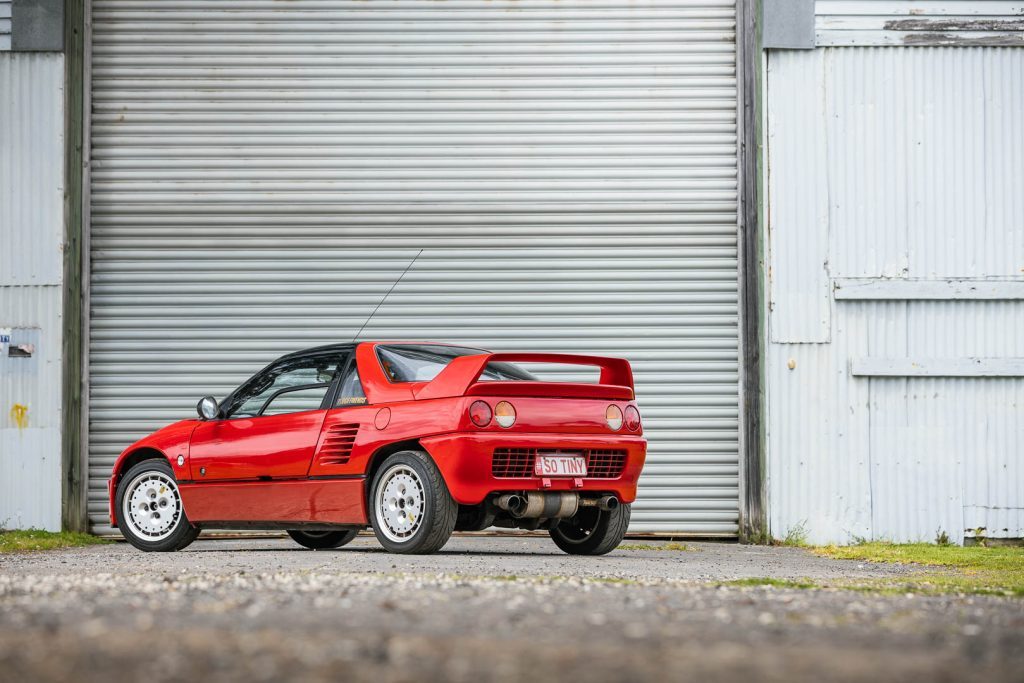
Towards the end of the decade, many wild and wonderful creations were spawned, and not just at the top end of the market.
Japan’s weird but loveable kei-jidōsha (kei car) market is one where vehicles are more practical than desirable, packaged to maximise interior space and styled in a function-over-form manner.
But there have been a few oddities over the years, and three special kei cars emerged in the early nineties. The Suzuki Cappuccino was one, the Honda Beat another, while a third and much rarer kei car hero was brewed up by Mazda.
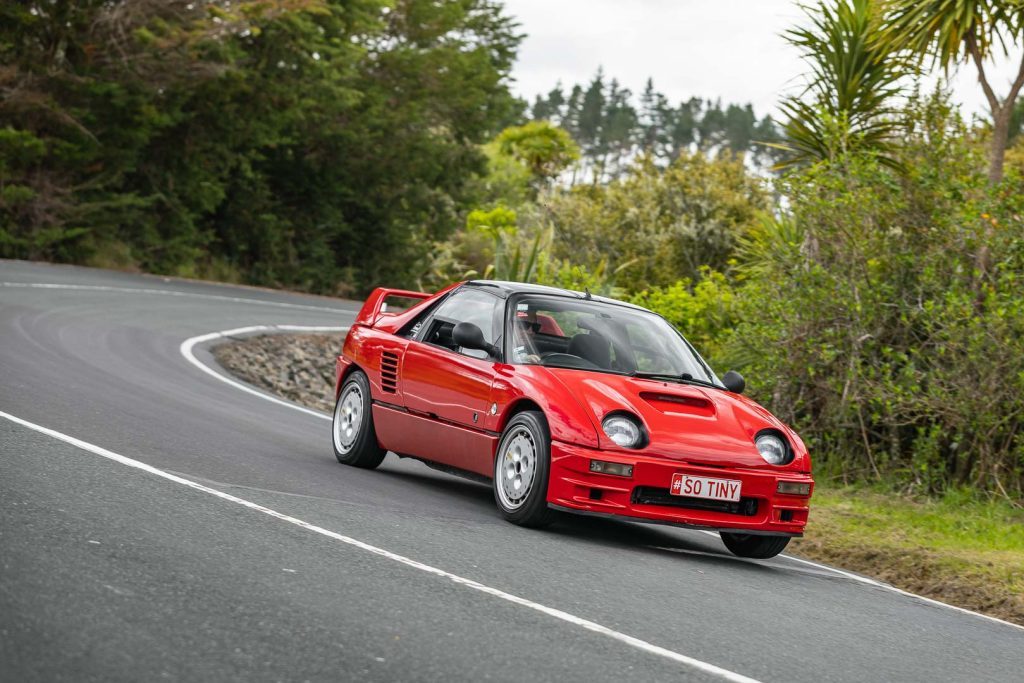
The AZ-1 was quite something, a mini supercar in looks, the first kei with gullwing doors while its plastic body panels were also a first for a Japanese car. How did this come to be?
Mazda’s only other offering in the kei class was the Porter, a dinky delivery truck.
You would have thought they’d be keen on designing something with mass market appeal but it was the mid-80s, so why not make a diminutive mid-engined machine with intimate accommodations for two and zero cargo space?
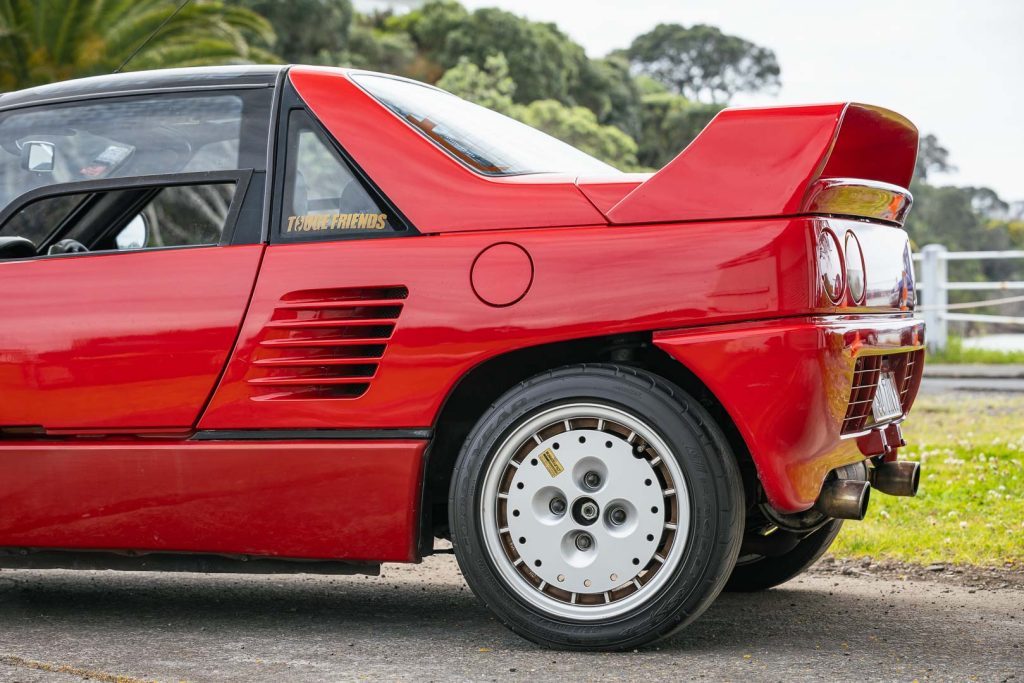
The genesis of the AZ-1 dates back as early as 1985, when Mazda’s Advanced Design Group (ADG) began to explore new ideas for a kei car. Early concept sketches included a mini RX-7 and a convertible with no doors.
A third design featured a mid-engine layout with a large greenhouse and, in concept form, this entire canopy flipped forward to allow entry to the cabin.
It was this design that was chosen for further development. The moving canopy idea was quickly scrapped however and the first scale model had conventional doors.
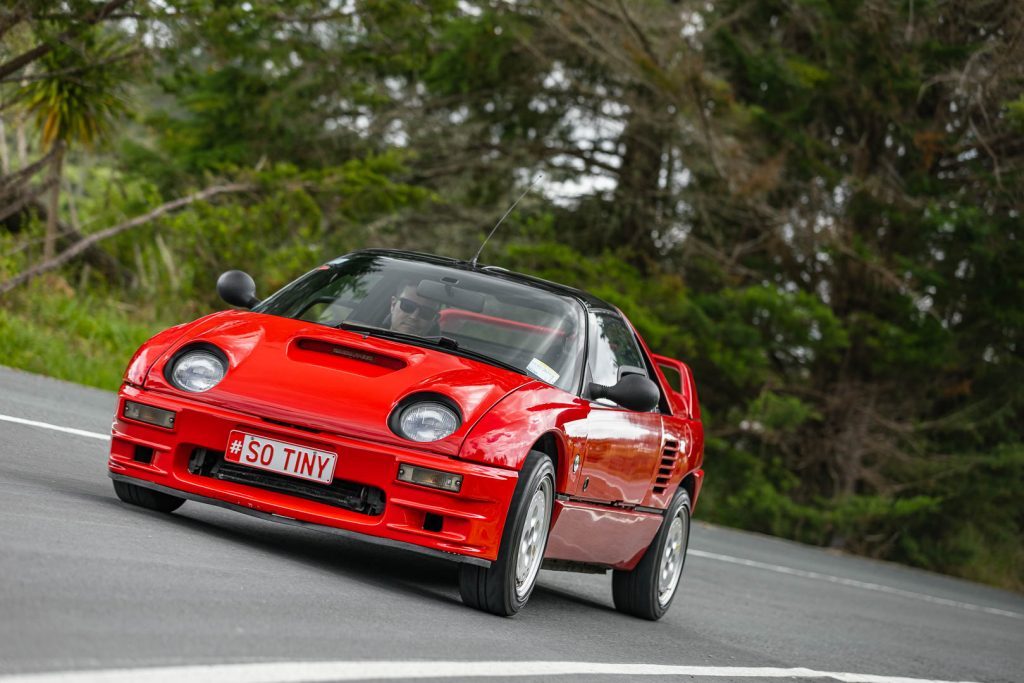
Early prototypes used mechanicals from the Daihatsu Mira while Mazda designed a bespoke chassis, formed from aluminium.
However, given the size of the sills, the conventional doors made entry difficult and so the AZ-1’s signature gullwing doors were the solution.
By 1987, Mazda had a running prototype which would be further developed before being displayed at the 1989 Tokyo motor show as the AZ 550 concept.
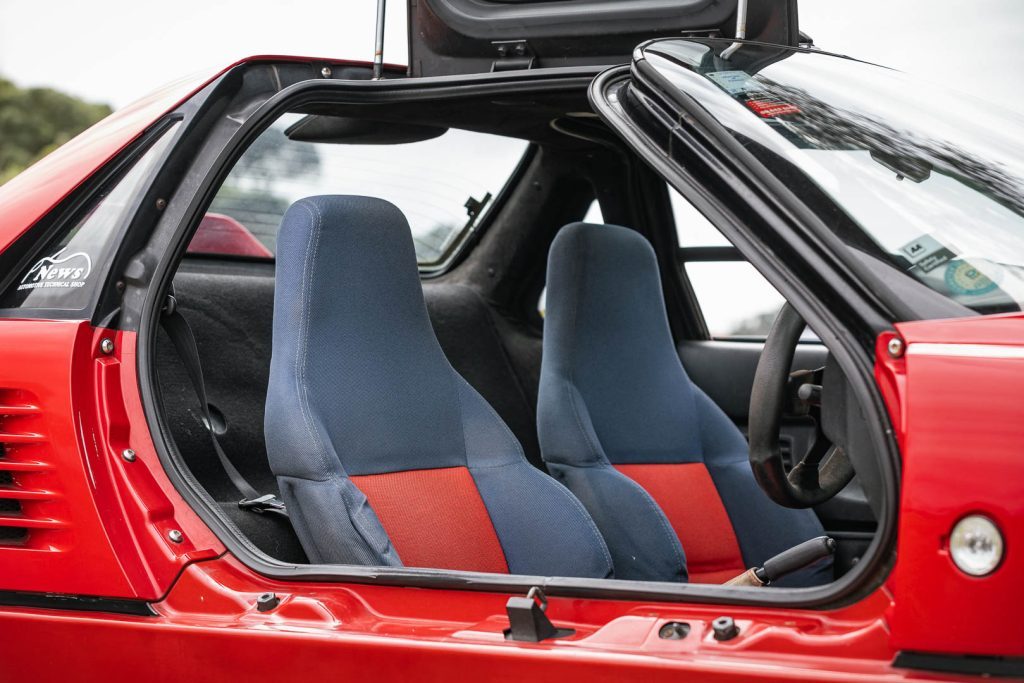
When it came to finding a power source for the AZ-1, Mazda was also developing a more practical kei car, the Carol, as a joint venture with Suzuki, so it made sense to tap into that relationship.
The prototype used an Alto Works powertrain and Suzuki-sourced suspension components. This tie-up led to Suzuki offering a rebadged version of the AZ-1 called the Cara.
In 1989, the project underwent a few hiccups. Changes to kei car laws meant a small increase in the maximum allowable length to 3.3m, and engine displacement increase to 660cc, a definite boon for torque production.
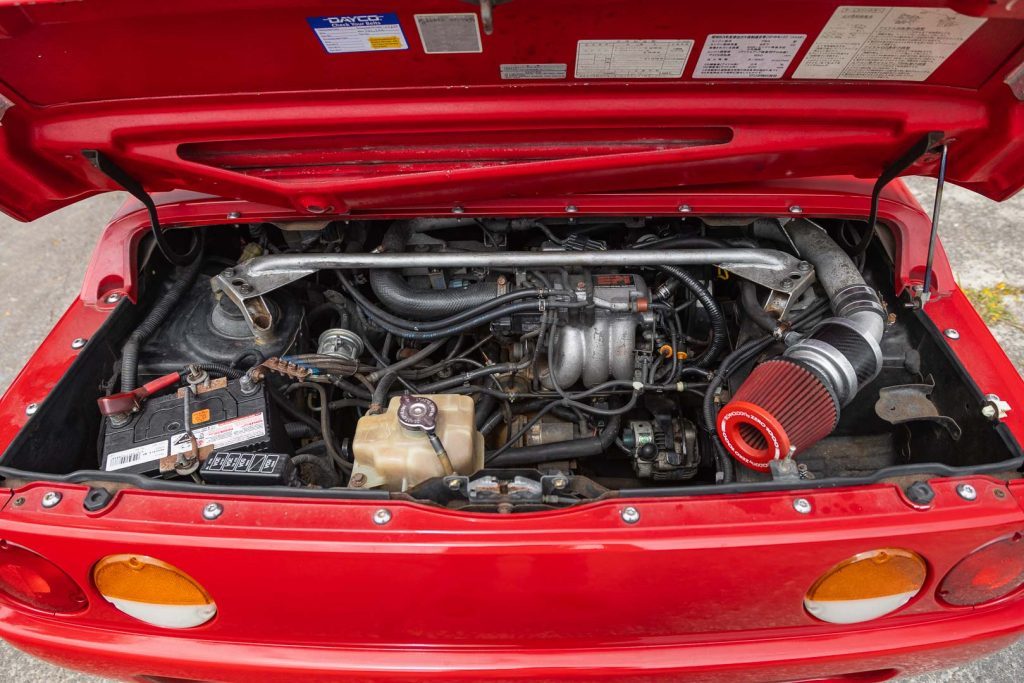
This saw Mazda further finesse the AZ-1 design, making the nose a little longer, the roofline a little taller, while Suzuki was able to supply a new 660cc engine.
Mazda also decided to replace the aluminium chassis with a steel one. At this stage the project was taken over by Toshihiko Hirai, who had just finished the MX-5.
He concentrated on reducing weight and lowering the centre of gravity. He wasn’t happy about the scrapping of the alloy chassis or the development car’s pop-up lights. He ordered a redesign of the latter on the grounds of weight, complexity and cost.
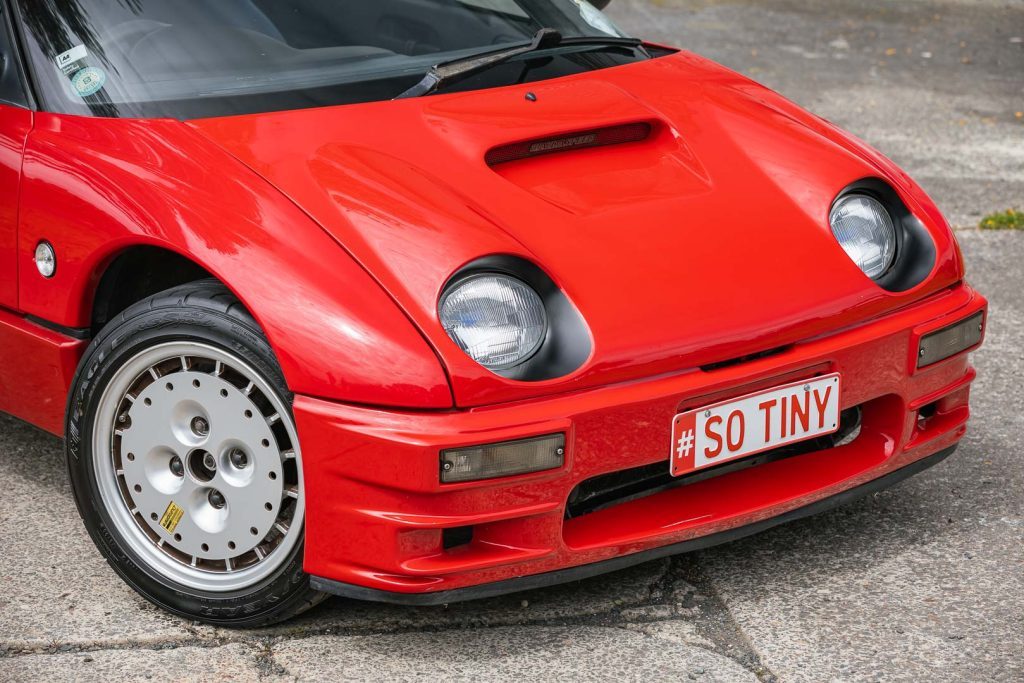
And so the production car gained its cute bug-eyed look. Viewed straight on, it reminds of Shrek with those lights, bumper vent and wing mirrors looking rather like the face of the green ogre.
With Mazda having many irons in the fire at this stage developing sales channels such as Eunos, Efini and Autozam, final development of the AZ-1 was outsourced to Hawtal Whiting in the UK.
The AZ-1 was finally ready for sale in 1992, and marketed under Mazda’s Autozam sub-brand. The end result was a car that measured 3295mm in length, was just 1395mm wide, 1150mm high and weighed 720kg.
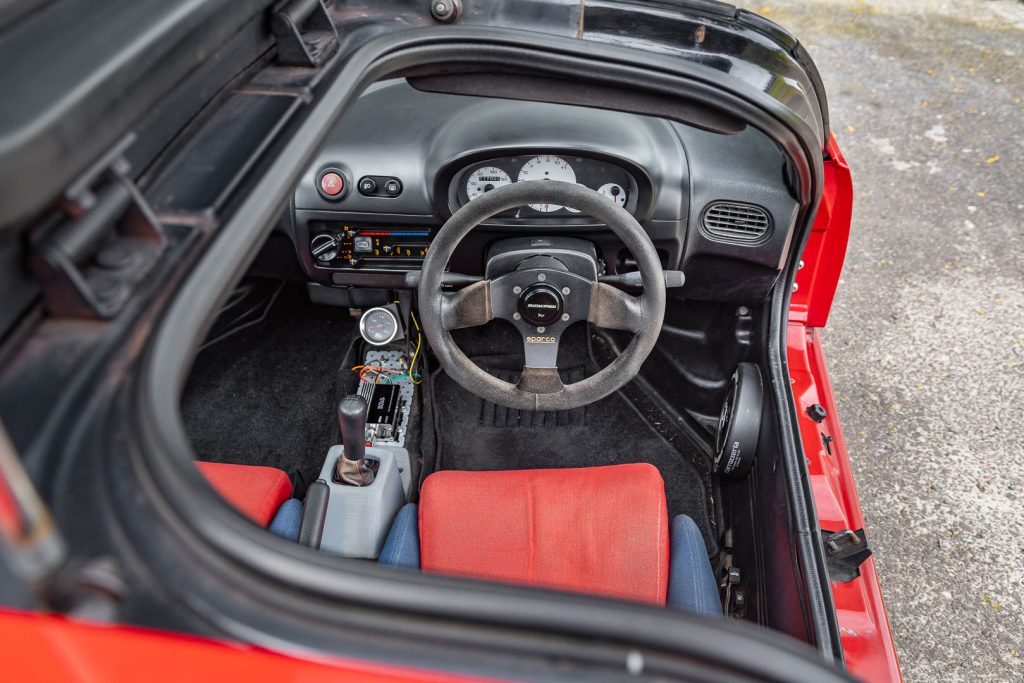
The 657cc turbocharged triple made 47kW at 6500rpm with 85Nm of torque at 4000rpm. Its five-speed manual sent drive to the rear wheels and ABS was optional.
The Suzuki Alto-sourced suspension saw struts at each corner, the rears on a subframe for greater rigidity, while the standard steel wheels wore 155/65R13-sized rubber.
However, the AZ-1’s timing was off, arriving as recession struck Japan. Adding to its problems, the Autozam was more expensive than the Suzuki Cappicino and the Honda Beat, which were already on sale.
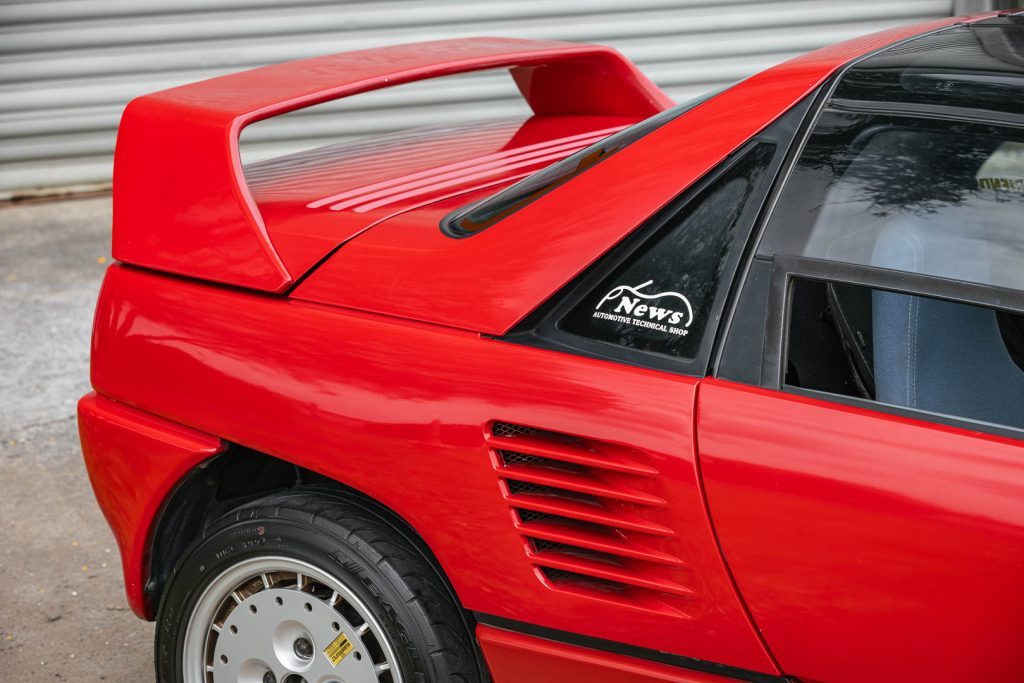
And so they outsold the AZ-1 six to one. The AZ-1 was a sales flop, with production ending two years later. Just under 4400 had been made. And Mazda was left with unsold stock hanging around.
Which is how the Mazdaspeed version you see here came about.
Owned by Aucklander Jamie Peterson, he explains that originally the AZ-1 was produced with either red or blue plastic panels on the top half of the car, while the lower trims were grey.
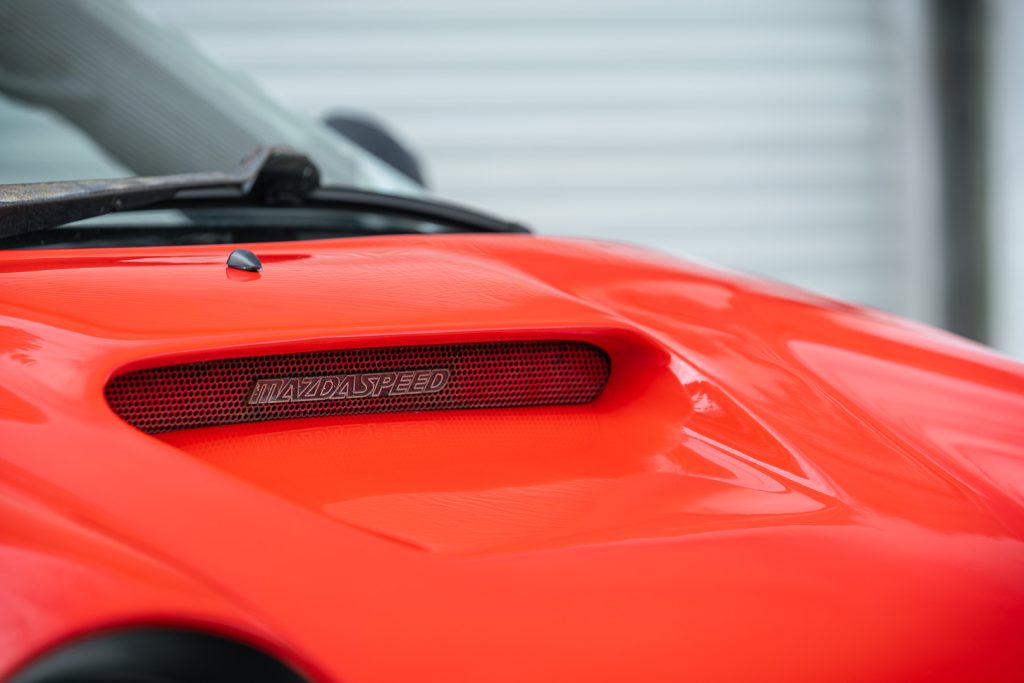
The Mazdaspeed models were put together to help move the unsold cars on.
They gained colour-matched panels, a different bonnet, front spoiler and big rear wing while offering options like sports suspension, an LSD, strut braces, and upgraded exhaust and wheels.
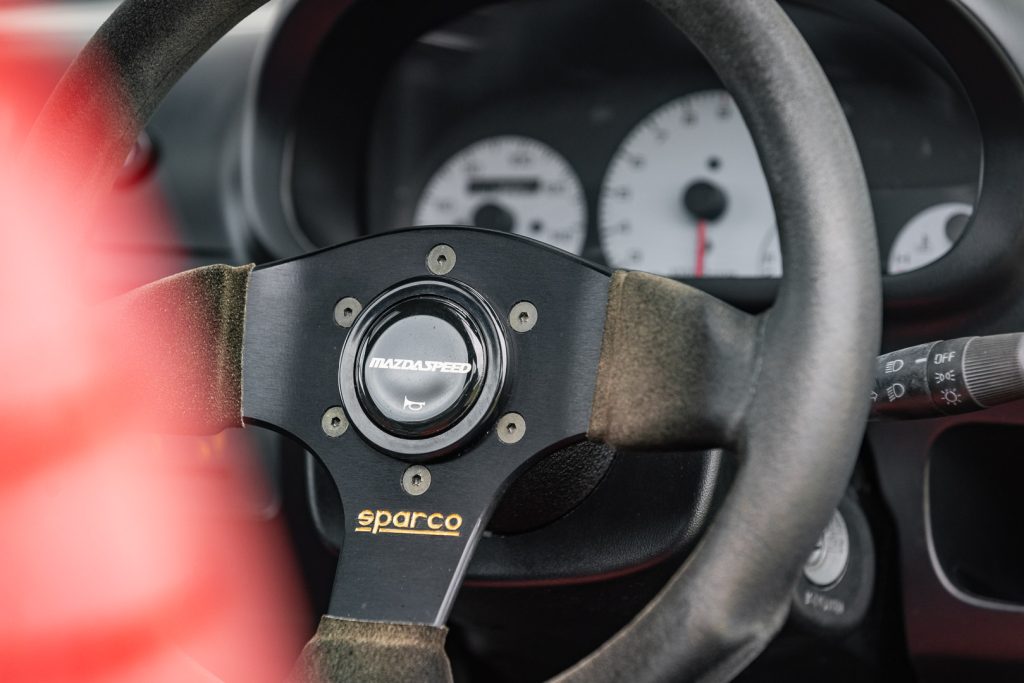
The AZ-1 is not something you see often as there are just five in New Zealand. Having owned it for the past seven years, Jamie drives it regularly.
“It’s a fun car, being so small it’s great in traffic. It gets a lot of attention, which is both a positive and negative as you don’t always want to stop for a chat” he says.
And it’s hardly practical, with no storage space whatsoever. Jamie says the AZ-1 was part of the first generation of kei cars to be crash tested.
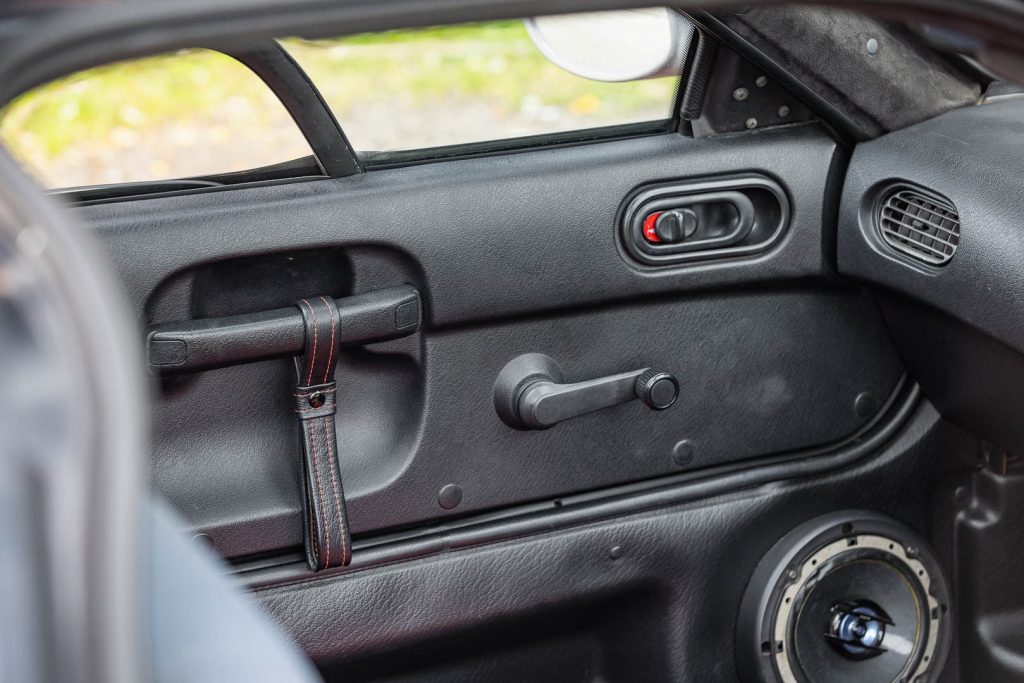
“Mazda planned to put the spare wheel under the bonnet up front but during crash testing, it would end up in the passenger compartment. And so they relocated the spare to behind the seats’.
He has since ditched the spare, freeing up a little ‘oddment space’, while the original wheels have made way for some period alloys. “I just liked them and it’s getting hard to find decent rubber for 13-inch wheels”.
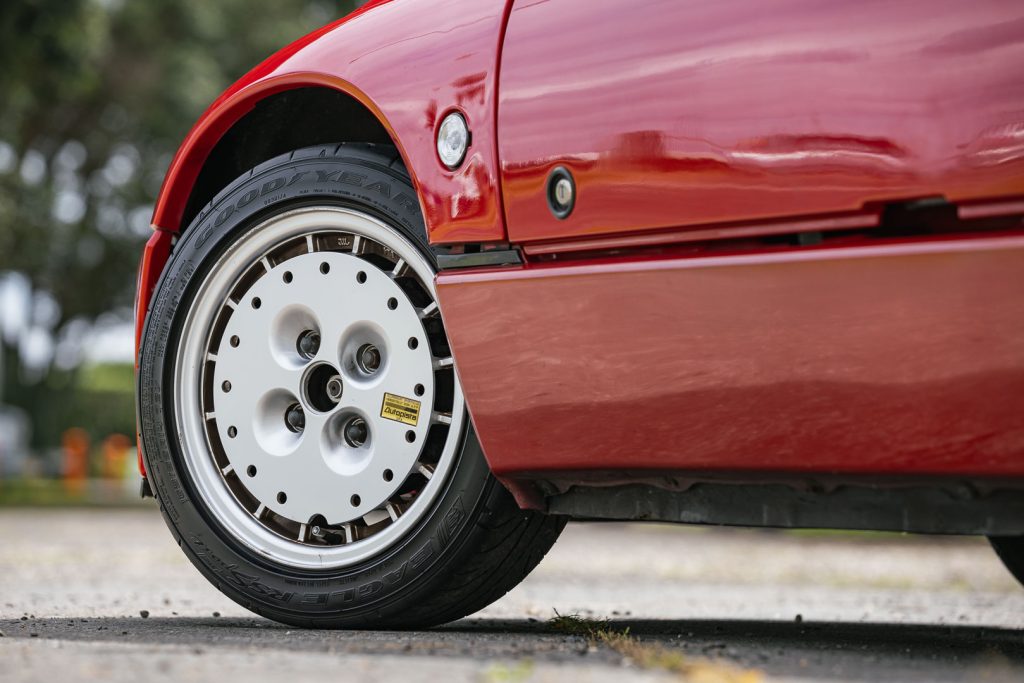
While mechanical bits are easily sourced thanks to their Suzuki origins, the plastic body parts and glass for the unique canopy are near impossible to come across.
“Some owners in Japan went to the trouble of approaching the original manufacturer to reproduce a run of screens but those are all gone now too.”
Lifting the doors up (surprisingly light) reveals a tight cockpit, while their gullwing design makes it easier (but not easy) to slot yourself in.
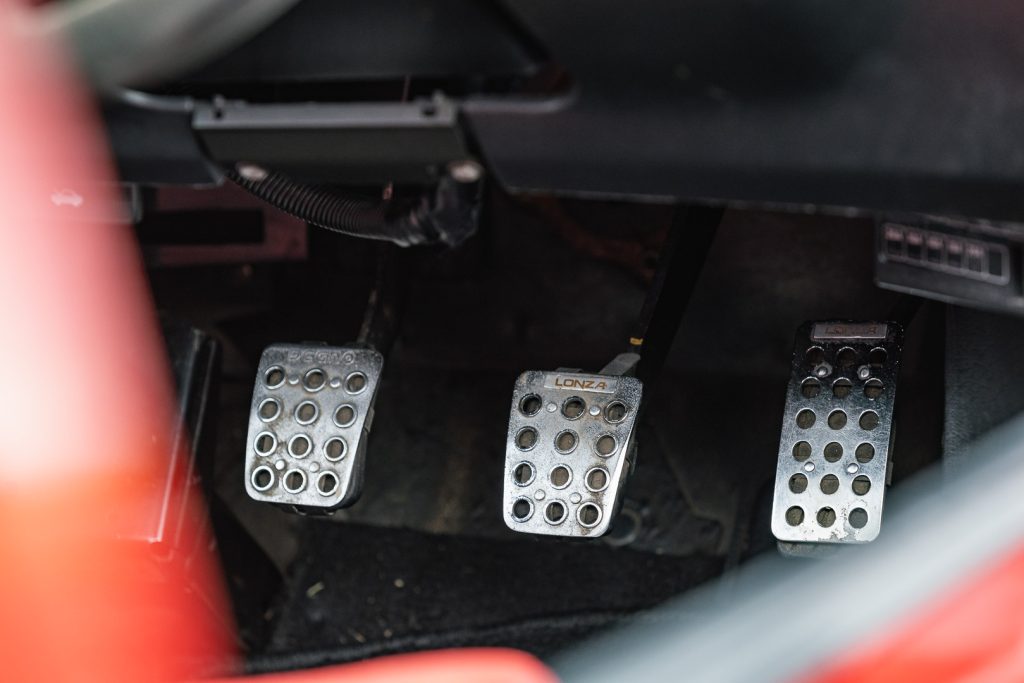
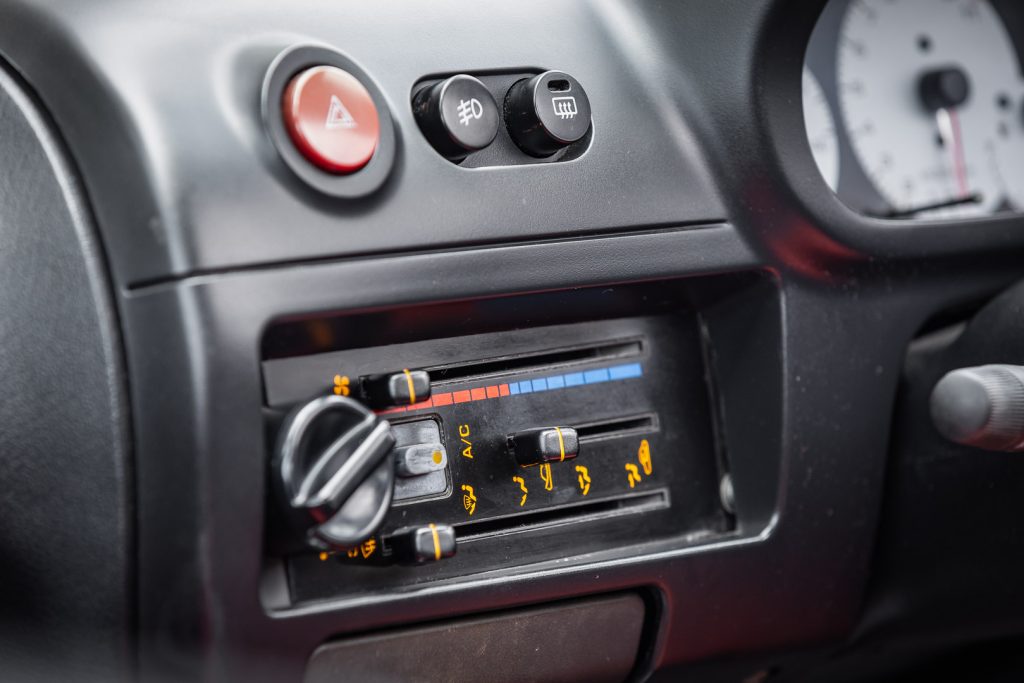
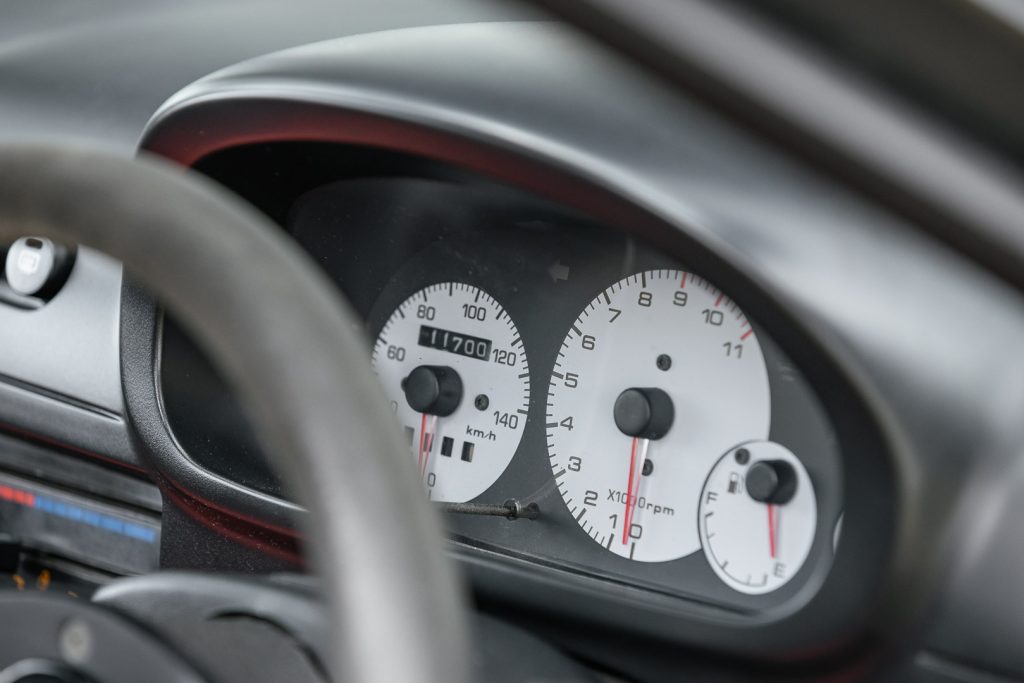
The seats are snug too and you are sitting rather close to your passenger. The driving position is tight, more likely designed with someone closer to five feet tall in mind.
Given its lack of mass, it doesn’t matter that the steering is unassisted, while the clutch and gearchange are kei car friendly too. Unfortunately the A/C no longer works, and lowering the tiny ‘ticket window’ doesn’t let much air into the cabin.
It rides okay over urban bumps, but there’s a cacophony in the cabin, the little engine buzzing away in behind.
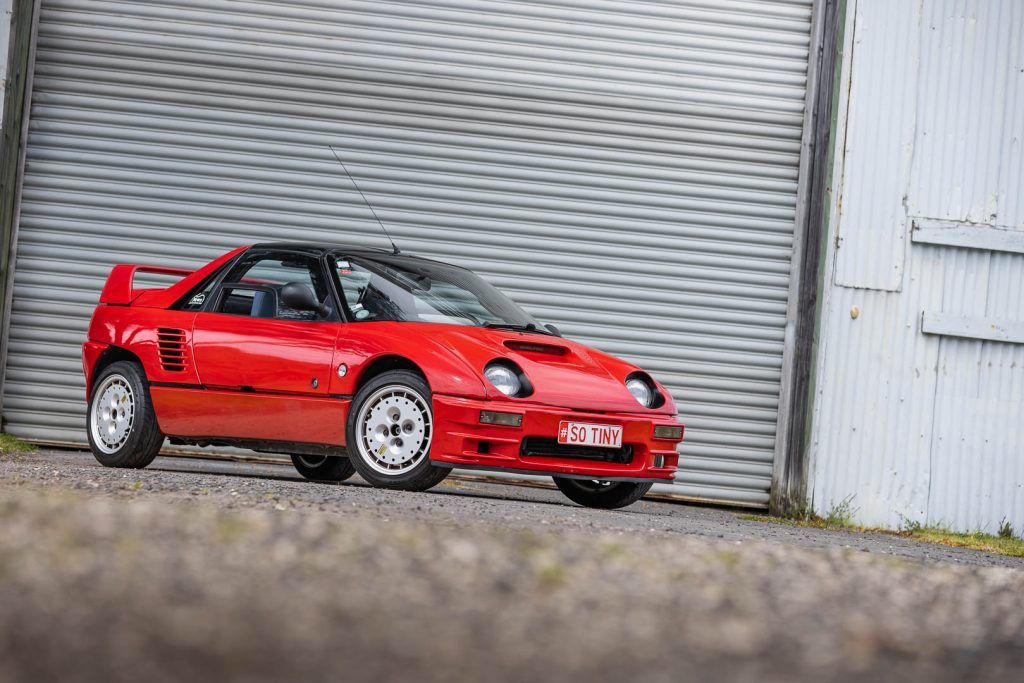
We managed to take a few bends in the AZ-1, the car proving to be a delight despite its minuscule motor. According to reports, when the car launched the engineers were after ‘pure driving enjoyment’.
Hirai san said; ‘absolute speed is not the only way to enjoy driving’.
And a speed demon this isn’t, though it does feel like you are flying given your proximity to the ground and the noise of the engine. It’s a real spinner, nothing much happening below 3500rpm but it’s certainly alive and eager by the time 4000rpm is on the board.
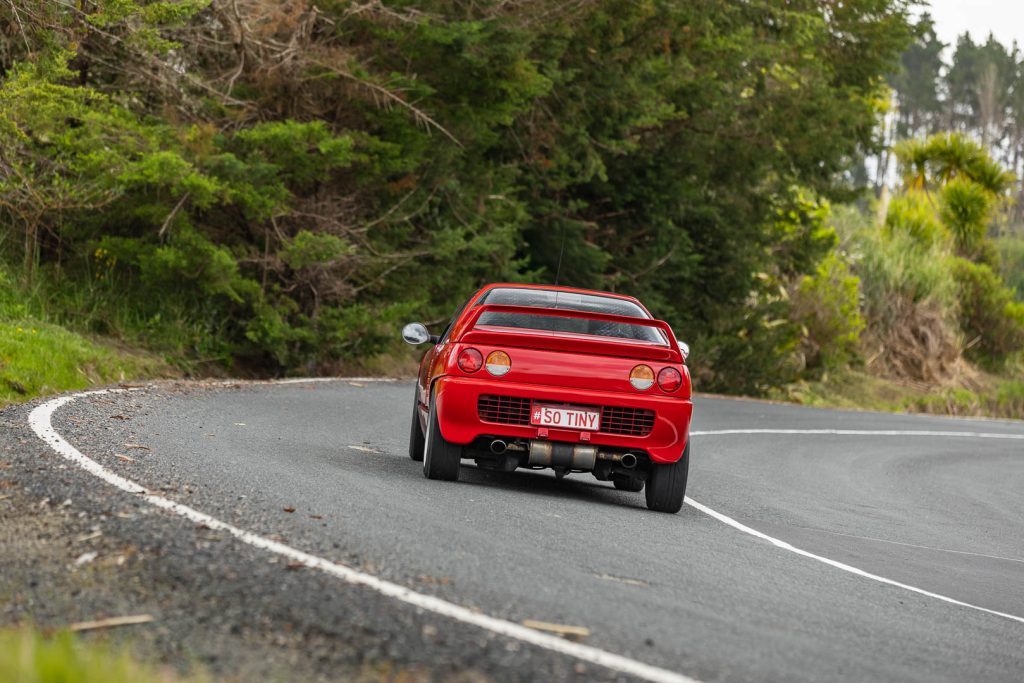
These little engines don’t shy away from hard work, pumping away past 8000rpm, where the ‘power band’ drops off, though the redline of the big tacho is set at nine.
The trans is hardly reference grade, being an Alto box, but it picks its way through the gears okay, although the narrow pedal box makes it harder to smooth out the downshifts.
But this sure deals to the bends. The unassisted steering is vibing with life, picking out the nuances of the surface below. It’s lightning quick too, minimal effort needed on the wheel to get it turning.
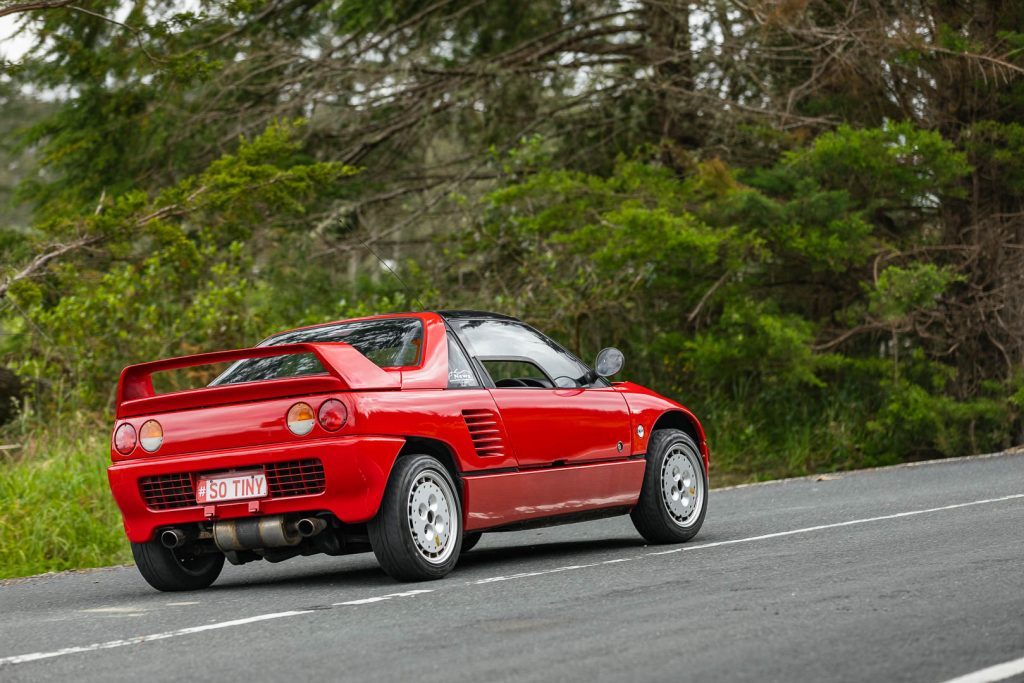
The short wheelbase and minimal mass translate to an ultra-nimble chassis. This has a sweet balance, the front unencumbered, and with the seats positioned right in the middle of the car, the AZ-1 pivots around you.
Being so narrow, it makes the road seem twice as wide as usual, so you have more room to play. The wider 14-inch rubber really sticks this in the bends, robbing the AZ-1 of some ‘pure driving enjoyment’.
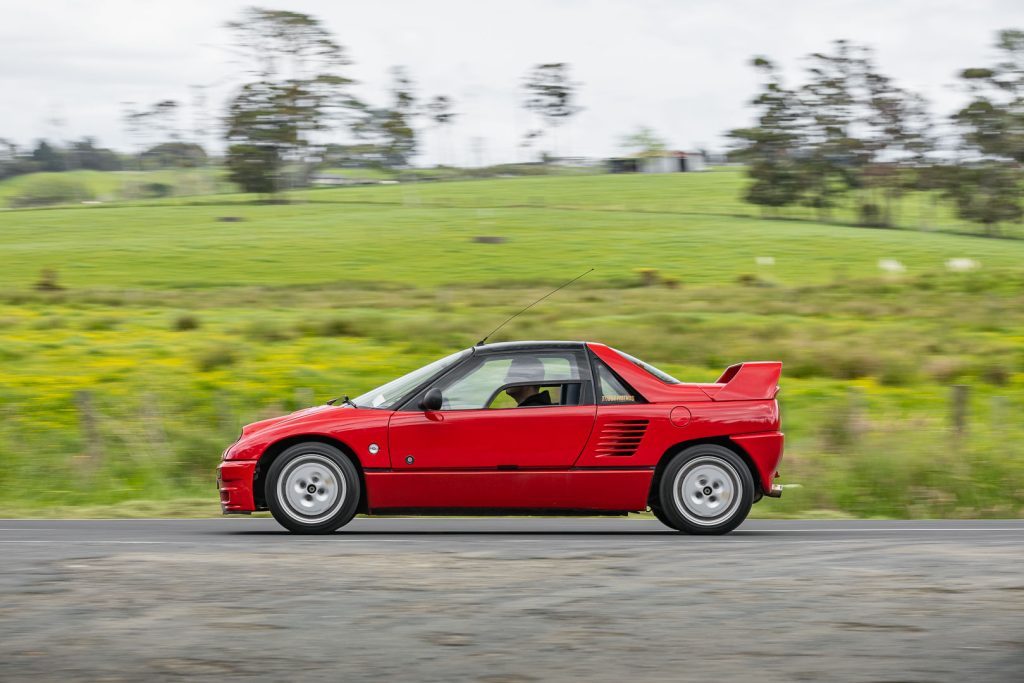
Jamie says it was much livelier on its 13s, complete with plenty of tyre squeal. That would be a laugh, proving that while the AZ-1 might be small, it’s a genuine character.
This article first appeared in the December/January 2025 issue of NZ Autocar magazine.


